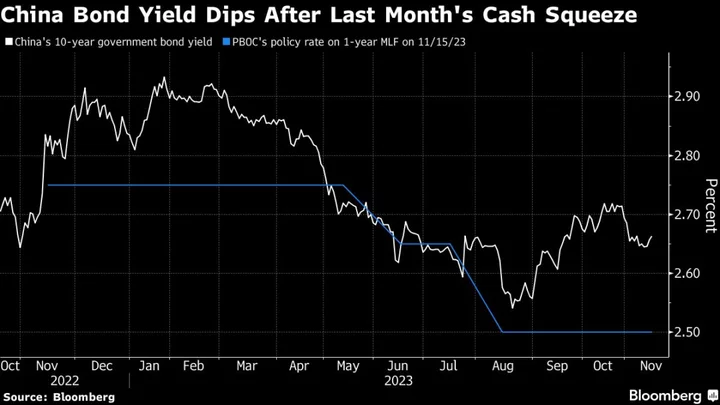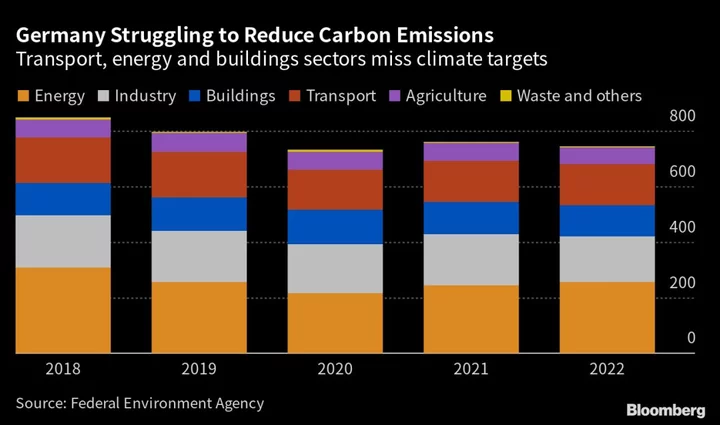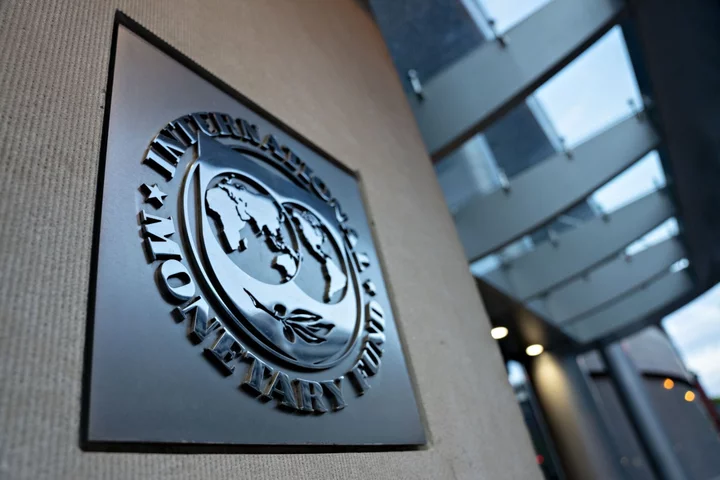There’s a 1.5 trillion yuan ($207 billion) question weighing on Chinese bond traders’ minds now: how will Beijing pull off that much debt sales with just six weeks left for the year.
The answer is the People’s Bank of China, the world’s only major central bank on a policy easing path, and a slowing economy that sustains voracious appetite for risk-free assets.
China has issued 9.6 trillion yuan of government bonds so far in 2023, against an estimated annual target of 11.1 trillion yuan, according to Bloomberg’s calculations of Orient Securities Co.’s data. This year’s issuance plan, which would be a record, includes 1 trillion yuan of additional sovereign notes approved last month for disaster relief and climate projects.
The world’s second-largest bond market has mostly taken the deluge of bonds in its stride, a testament to the success of the PBOC’s interest rate cuts and periodic pump priming. The central bank’s liquidity management has been so effective that expectations are diminishing for it to cut commercial lenders’ reserve requirements again in the near term.
“Government bond supply will drain liquidity from the banking system, but only temporarily and the PBOC will facilitate the issuance via open-market injections so that liquidity won’t over-tighten,” said Stephen Chiu, a Bloomberg Intelligence strategist. “The room for a reserve-requirement ratio cut is shrinking.”
Echoing Chiu’s view, Citic Securities Co. and Pantheon Macroeconomics Ltd. also don’t see an imminent RRR cut. The PBOC has cut the ratio twice this year with a 25-basis-point move each in March and September.
The PBOC added 600 billion yuan to the financial system on Wednesday via the MLF, a one-year policy loan, marking the biggest cash injection in seven years. It followed a brief episode of a liquidity squeeze that rattled China’s money market in late October, when large government debt supply and month-end cash needs by banks caused short-term borrowing costs to surge.
In a sign of calm in the money market, the interest rate on the benchmark seven-day interbank loan has dropped 28 basis points from its end-October peak. And despite the issuance boom, yields on China’s benchmark 10-year government debt were at 2.66% on Thursday, well below the year’s high of 2.93% in January.
The bond market’s composure has come even as the Ministry of Finance increased its single bond issuance to 115 billion yuan in September from a previous record of 95 billion yuan, Bloomberg calculations of historical data show. The bigger size also means the ministry may not need to introduce additional auctions or even larger single issuance to meet its full-year target.
“The market is unlikely to see more than a brief impact as the PBOC will manage down any rate spike with liquidity injections as needed,” said Duncan Wrigley, chief China economist at Pantheon Macroeconomics. “Stresses will continue but the point of maximum tension has probably passed.”
--With assistance from Helen Sun.









